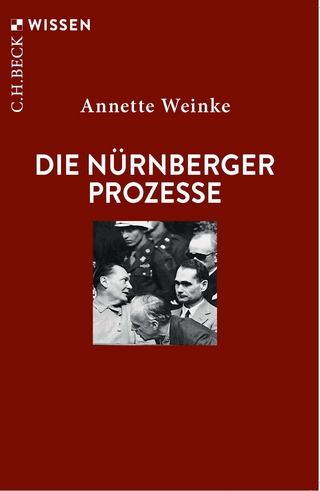
Meade and Lee at Bristoe Station
The Problems of Command and Strategy After Gettysburg, from Brandy Station to the Buckland Races, August 1 to October 31, 1863
Seiten
2019
Savas Beatie (Verlag)
978-1-61121-396-6 (ISBN)
Savas Beatie (Verlag)
978-1-61121-396-6 (ISBN)
- Titel ist leider vergriffen;
keine Neuauflage - Artikel merken
A follow-up volume to Hunt’s well-received Meade and Lee After Gettysburg, this is a fast-paced, dynamic account of how the Army of Northern Virginia carried the war above the Rappahannock once more in an effort to retrieve the laurels lost in Pennsylvania on the fields of Gettysburg.
The Civil War in the Eastern Theater during the late summer and fall of 1863 was anything but inconsequential. Generals Meade and Lee continued where they had left off, executing daring marches while boldly maneuvering the chess pieces of war in an effort to gain decisive strategic and tactical advantage. Cavalry actions crisscrossed the rolling landscape; bloody battle revealed to both sides the command deficiencies left in the wake of Gettysburg. It was the first and only time in the war Meade exercised control of the Army of the Potomac on his own terms. Jeffrey Wm Hunt brilliant dissects these and others issues in Meade and Lee at Bristoe Station: The Problems of Command and Strategy After Gettysburg, from Brandy Station to the Buckland Races, August 1 to October 31, 1863.
The carnage of Gettysburg left both armies in varying states of command chaos as the focus of the war shifted west. Lee further depleted his ranks by dispatching James Longstreet (his best corps commander) and most of his First Corps via rail to reinforce Bragg’s Army of Tennessee. The Union defeat that followed at Chickamauga, in turn, forced Meade to follow suit with the XI and XII Corps. Despite these reductions, the aggressive Lee assumed the strategic offensive against his more careful Northern opponent, who was also busy waging a rearguard action against the politicians in Washington.
Meade and Lee at Bristoe Station is a fast-paced, dynamic account of how the Army of Northern Virginia carried the war above the Rappahannock once more in an effort to retrieve the laurels lost in Pennsylvania. When the opportunity beckoned Lee took it, knocking Meade back on his heels with a threat to his army as serious as the one Pope had endured a year earlier. As Lee quickly learned again, A. P. Hill was no Stonewall Jackson, and with Longstreet away Lee’s cudgel was no longer as mighty as he wished. The high tide of the campaign ebbed at Bristoe Station with a signal Confederate defeat. The next move was now up to Meade.
Hunt’s follow-up volume to his well-received Meade and Lee After Gettysburg is grounded upon official reports, regimental histories, letters, newspapers, and other archival sources. Together, they provide a day-by-day account of the fascinating high-stakes affair during this three-month period. Coupled with original maps and outstanding photographs, this new study offers a significant contribution to Civil War literature.
The Civil War in the Eastern Theater during the late summer and fall of 1863 was anything but inconsequential. Generals Meade and Lee continued where they had left off, executing daring marches while boldly maneuvering the chess pieces of war in an effort to gain decisive strategic and tactical advantage. Cavalry actions crisscrossed the rolling landscape; bloody battle revealed to both sides the command deficiencies left in the wake of Gettysburg. It was the first and only time in the war Meade exercised control of the Army of the Potomac on his own terms. Jeffrey Wm Hunt brilliant dissects these and others issues in Meade and Lee at Bristoe Station: The Problems of Command and Strategy After Gettysburg, from Brandy Station to the Buckland Races, August 1 to October 31, 1863.
The carnage of Gettysburg left both armies in varying states of command chaos as the focus of the war shifted west. Lee further depleted his ranks by dispatching James Longstreet (his best corps commander) and most of his First Corps via rail to reinforce Bragg’s Army of Tennessee. The Union defeat that followed at Chickamauga, in turn, forced Meade to follow suit with the XI and XII Corps. Despite these reductions, the aggressive Lee assumed the strategic offensive against his more careful Northern opponent, who was also busy waging a rearguard action against the politicians in Washington.
Meade and Lee at Bristoe Station is a fast-paced, dynamic account of how the Army of Northern Virginia carried the war above the Rappahannock once more in an effort to retrieve the laurels lost in Pennsylvania. When the opportunity beckoned Lee took it, knocking Meade back on his heels with a threat to his army as serious as the one Pope had endured a year earlier. As Lee quickly learned again, A. P. Hill was no Stonewall Jackson, and with Longstreet away Lee’s cudgel was no longer as mighty as he wished. The high tide of the campaign ebbed at Bristoe Station with a signal Confederate defeat. The next move was now up to Meade.
Hunt’s follow-up volume to his well-received Meade and Lee After Gettysburg is grounded upon official reports, regimental histories, letters, newspapers, and other archival sources. Together, they provide a day-by-day account of the fascinating high-stakes affair during this three-month period. Coupled with original maps and outstanding photographs, this new study offers a significant contribution to Civil War literature.
Jeffrey William Hunt is Director of the Texas Military Forces Museum, the official museum of the Texas National Guard, located at Camp Mabry in Austin, Texas, and an Adjunct Professor of History at Austin Community College, where he has taught since 1988. He holds a Bachelors Degree in Government and a Masters Degree in History, both from the University of Texas at Austin. Mr. Hunt’s writing credits include his book, The Last Battle of the Civil War: Palmetto Ranch, and contributions to Essential Civil War Curriculum, the Revised Handbook of Texas and the Gale Library of Daily Life: American Civil War.
| Erscheinungsdatum | 20.09.2018 |
|---|---|
| Zusatzinfo | 48 images, 23 maps |
| Verlagsort | El Dorado Hills |
| Sprache | englisch |
| Maße | 152 x 229 mm |
| Themenwelt | Sachbuch/Ratgeber ► Geschichte / Politik ► Allgemeines / Lexika |
| Geisteswissenschaften ► Geschichte ► Regional- / Ländergeschichte | |
| Geschichte ► Teilgebiete der Geschichte ► Militärgeschichte | |
| Sozialwissenschaften ► Politik / Verwaltung | |
| ISBN-10 | 1-61121-396-7 / 1611213967 |
| ISBN-13 | 978-1-61121-396-6 / 9781611213966 |
| Zustand | Neuware |
| Haben Sie eine Frage zum Produkt? |
Mehr entdecken
aus dem Bereich
aus dem Bereich
neueste Manipulationstechniken als Waffengattung der NATO
Buch | Softcover (2023)
Westend (Verlag)
24,00 €


